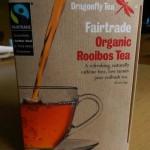In May and June 2011, Sanford welcomed Rakesh “Rootsman Rak” to deliver a course on permaculture to members of the coop. I took notes on the lectures and now they will be published in The San – with massive help from the editorial collective. Here is the second chapter.
2. From a Cup of Tea to Peak Oil
In the second part of the course, we analysed the inputs and outputs of different cups of tea, depending on where the ingredients came from.
Mint from our garden
Inputs:
- The work of planting it (or cutting or propagating).
- Sunshine, water, soil.
- Boiling water for the tea.
- Personal energy to care for it and to make the actual tea.
Outputs:
- Tea.
- Urine.
- Compostable waste.
- Digestion.
- Potential for friendship.
Not much maintenance is needed; it is pretty much self-contained as it is actually more difficult to stop it from growing.
 Yogi, organic fair-trade tea bought in a shop
Yogi, organic fair-trade tea bought in a shop
Inputs:
Yogi tea can have as many as ten ingredients, the growing of which will have the same inputs as the tea from our garden, plus more labour.
Other inputs include:
- Processing raw ingredients.
- Lots of packaging waste.
- Transportation.
- Marketing and sales, including the energy needed to power computers for the graphic design of packaging.
- The shopping process, including the energy needed to keep the shop open.
- The making of the tea itself.
Most of the ingredients are organic, but we still do not know how intensive the agriculture is or where it is grown. From what we know of agriculture, most of the ingredients may have been shifted halfway round the world, so there is a big transportation element in these products.
Outputs:
- The pleasure of drinking it.
- Compost.
- Lots of pollution.
- Money for the farmer.
 Tea from supermarket
Tea from supermarket
Inputs:
The tea is of obscure origin, but from the list of ingredients, it looks like it has different plants from different sources, all of them needing different attention.
- Transportation: to the supermarket, but also from the different farmers to the packaging factory. It was possibly transported between countries in the production process.
- The currant flavour was probably taken out with some solvent and then put back in during the process.
- Packaging raw materials and labels.
- Some ingredients like citric acid have a completely unknown origin.
- The labour of growing, drying and packaging the food.
- To make it caffeine free, you need to use yet another solvent.
- The labour of designing the label and marketing it.
- Fertilisers.
Outputs:
- Output from all four fruit ingredients.
- Waste in packaging, including dyes.
- The tea can be later composted.
- Urine.
In terms of energy efficiency, fair trade, organic tea and supermarket tea are not too different.
This exercise forces us to pay attention to how we build our economies and how they use so much energy. By organising our communities and growing tea for ourselves, we can reduce so much of the inefficiency of these processes. By observing the inputs and outputs of a product, we can draw sound conclusions and act more responsibly. But often we are not observing. We need to observe, to work with nature, to see where the water streams from the rain come and where the sun shines more.
Peak Oil
Something as innocent as a cup of tea helps us realise how all our habits of consumption interact with the rest of the world. The global economic system is completely entangled in our way of living. Analysing the route of the tea plant until it gets to our cup makes us realise how we live, how we consume and how we normally go about it without realising.
We are at the point where we are consuming more oil than we can extract. Some say oil production will be over within twenty years. If we continue producing tea the way we do now, it’s going to become too expensive, because the whole production process, and not just the transport, is based on oil. The tea grown in a permaculture garden, on the other hand, takes only a minimal amount of energy.
We use a lot of commodities, but are we conscious of how much energy has been put into producing them?